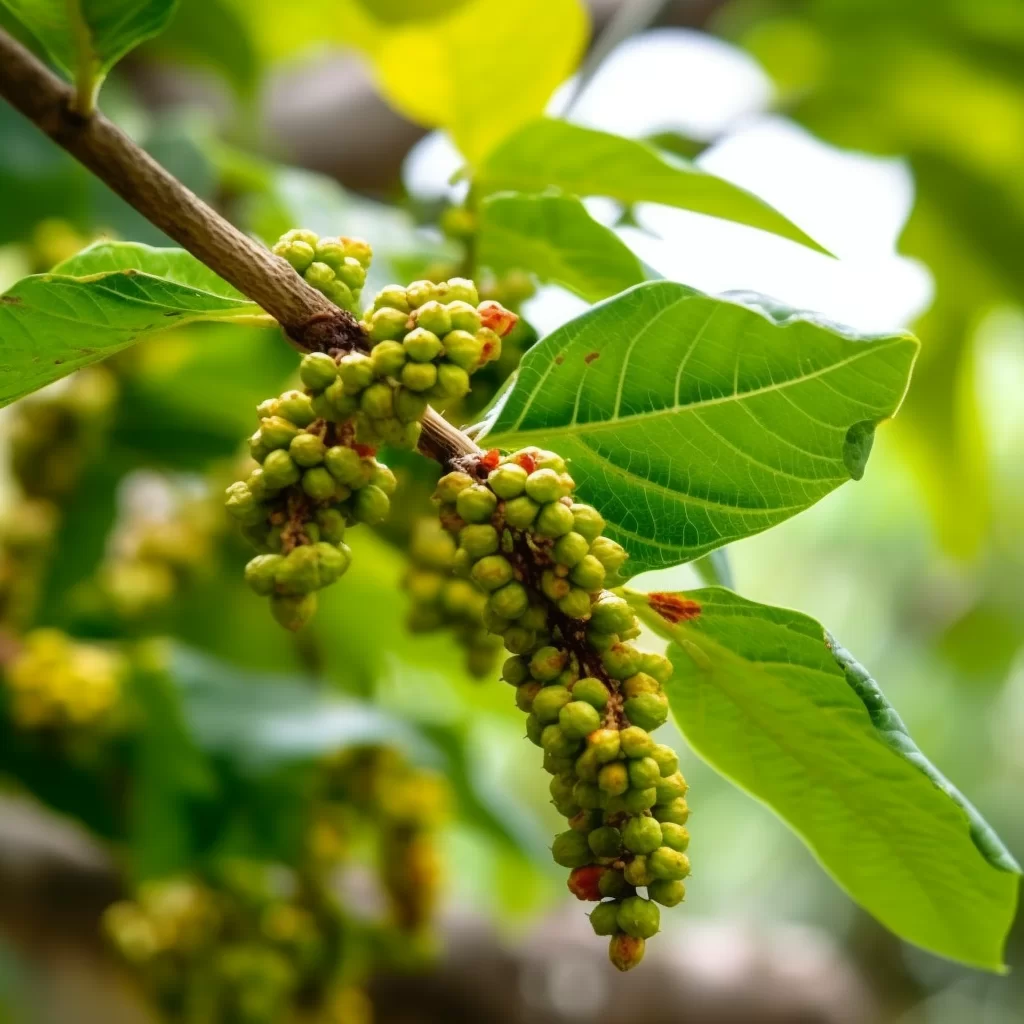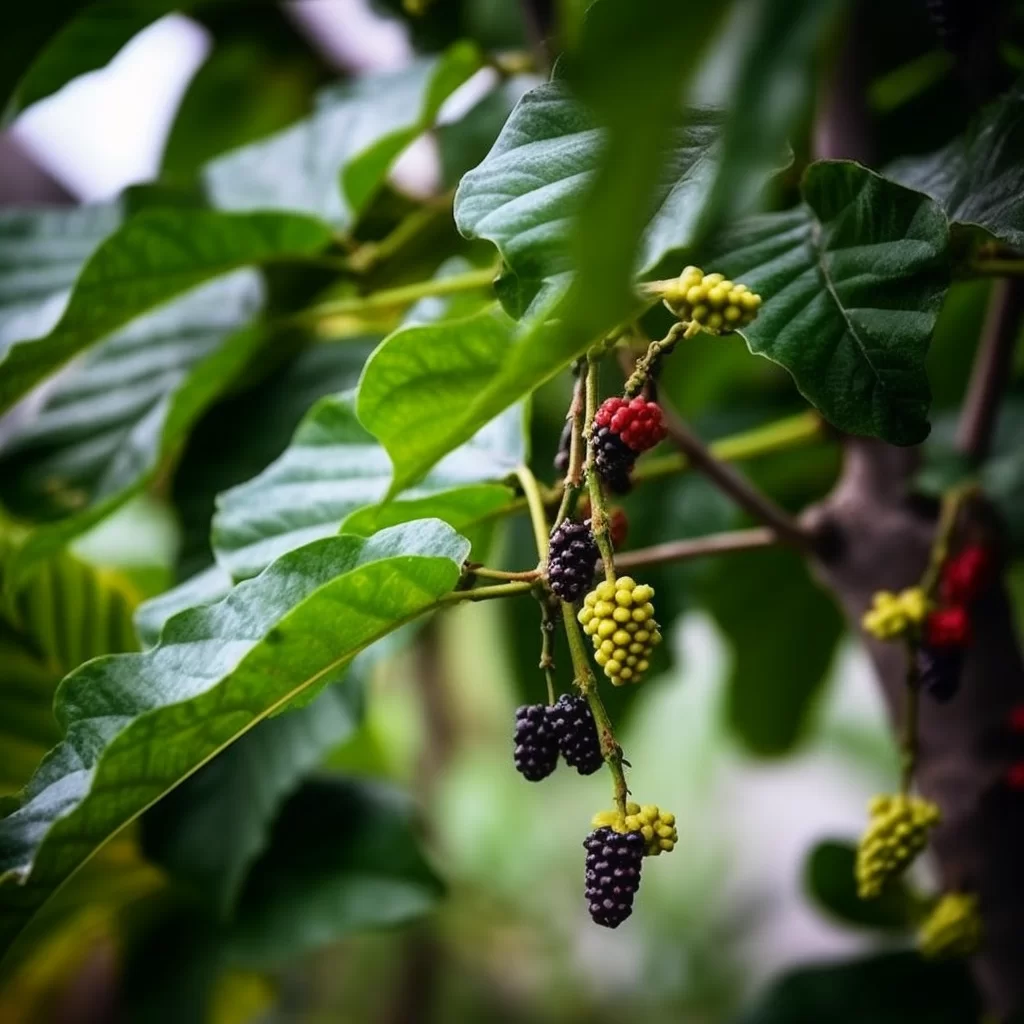Story of Day :
The Mulberry Plant: A Complete Guide and Care Tips
As someone who spends a lot of time tending to gardens and writing about them, I have come across many different kinds of plants.
But there is one in particular that has always captivated my attention: the mulberry plant.
Part of the Moraceae family, this tree is known for its juicy and flavorful berries.
In this article, I want to share with you all the important information you need to know about mulberry plants – from their advantages and health benefits, to how you can grow them in your own garden or backyard.Mulberry trees are fascinating for a number of reasons.
For starters, they are very versatile and can be grown both in small pots as well as large gardens or fields.
Additionally, they have many benefits – not only do their fruits taste delicious (and can be used for cooking), but they also contain several nutritional properties that are good for our health such as vitamins C and K, iron, potassium and fiber.
Taking care of a mulberry plant isn’t too difficult either; all it requires is some basic maintenance like pruning at the right time of year or making sure it has enough water during dry periods.
With these tips in mind – plus more detailed advice on planting techniques – anyone can enjoy growing this wonderful fruit tree themselves!
Benefits of Mulberry Plants
If you’re looking for a snack that’s both delicious and nutritious, mulberries might be the perfect choice for you.
Not only do they have a sweet taste that many people love, but they are also loaded with essential vitamins and minerals.
For example, mulberries are high in Vitamin C which is important for maintaining a strong immune system.
Additionally, they contain potassium which can help regulate blood pressure levels. But there’s more to these little berries than just their nutritional value.
But there’s more to these little berries than just their nutritional value.
Mulberries are also packed with antioxidants which play a crucial role in protecting our bodies from harmful free radicals that can cause damage over time.
In fact, studies have shown that consuming mulberries regularly may even reduce the risk of chronic diseases such as heart disease and cancer.
So whether you’re looking to improve your health or simply satisfy your sweet tooth, adding some mulberries to your diet is definitely worth considering!
Growing Mulberry Plants
If you’re looking to grow your own mulberry tree there are several things you should keep in mind:
- Location: Mulberries require full sun exposure so choose a location that gets at least 6 hours of direct sunlight daily.
- Soil: The soil should be well-draining because mulberries don’t like wet feet.
- Fertilizer: Fertilize your tree twice every year using organic fertilizer during early spring or late fall.
- Pollination: Unlike some fruit trees like apples or pears which require cross-pollination from another variety–mulberries don’t require any special pollinators since they self-pollinate easily due to their unique flowers’ structure!
Mulberry plants are a delightful addition to any garden.
They not only offer juicy fruits, but their leaves also serve as food for silkworms and have medicinal properties.
If you plan on growing mulberry plants, there are a few things to keep in mind.
Firstly, they prefer well-draining soil and ample sunlight to thrive.
Secondly, mulberries require regular pruning to encourage healthy growth and fruit production.
It’s important to remove dead or diseased branches regularly and trim back the tree’s canopy as needed. To care for your mulberry plant’s fruit production specifically, make sure it receives adequate water during the growing season – about one inch per week – especially during dry spells.
To care for your mulberry plant’s fruit production specifically, make sure it receives adequate water during the growing season – about one inch per week – especially during dry spells.
Fertilize with nitrogen-rich fertilizer once in the spring before new growth appears, then again after harvesting the fruit in late summer or early fall.
Overall, mulberry plants are easy to grow as long as they receive proper care and attention throughout the year!
Now that you know how to grow a mulberry tree, here are some tips on caring for it:
- Watering: Mulberries don’t like wet soil so avoid overwatering.
Water the tree once every week and make sure the soil is moist but not waterlogged.
- Pruning: Prune your mulberry tree regularly during winter to remove dead or damaged branches.
Also removing low hanging branches helps increase airflow and sunlight exposure which in turn promotes healthy fruit growth.
- Pest Control:Mulberries trees can be attacked by pests such as aphids or whiteflies so keep an eye out for any signs of infestation.
If you notice any pests, use organic pesticides to control them before they cause damage to your plant.
As we prepare to wrap up this discussion, it’s important to reflect on the key takeaways.
We’ve explored a range of topics and ideas that are crucial for individuals and organizations looking to thrive in today’s fast-paced world.
From the importance of staying curious and adaptable, to the power of collaboration and innovation, there are many lessons we can draw from our conversation.At its core, this discussion has been about one thing: growth.
Whether we’re talking about personal or professional development, embracing new challenges and opportunities is essential if we want to continue evolving and achieving our goals.
By keeping an open mind, taking calculated risks, and seeking out new perspectives whenever possible, we can all work towards a brighter future – both for ourselves as individuals and for the wider communities that we serve.
Mulberry plants are not only a delicious treat but also have various benefits to offer.
These plants make for a great addition to your garden, and it’s crucial to take good care of them.
By following some simple tips on how to grow and care for mulberry trees, you can enjoy a delightful harvest of juicy berries that will undoubtedly add flavor and nutrients to your diet.Proper mulberry tree care is essential in ensuring that the plant thrives well and yields abundant fruit.
Mulberries are rich in antioxidants, vitamins, minerals, fiber, and other nutrients that promote overall health.
Therefore, growing these trees can help enhance your well-being while also adding beauty to your outdoor space.
With adequate attention given to watering, pruning, fertilizing the plant regularly – you can expect an incredible bounty of sweet-tasting berries year after year!